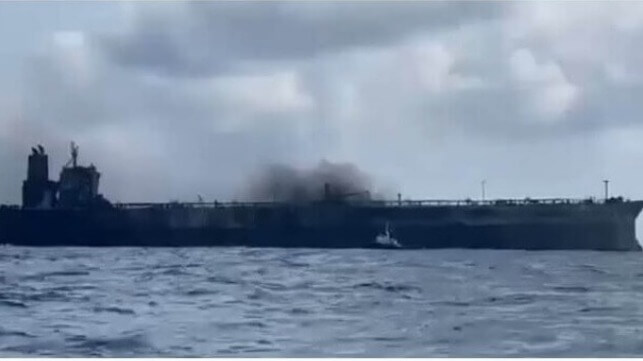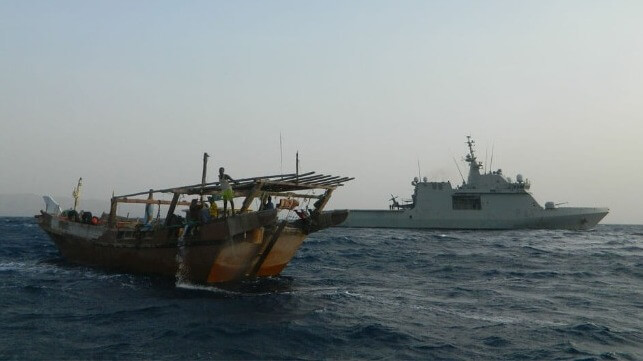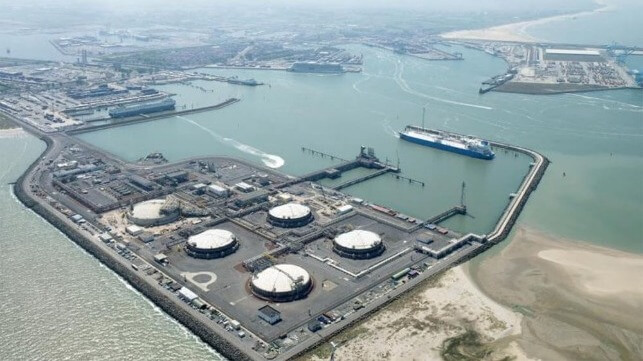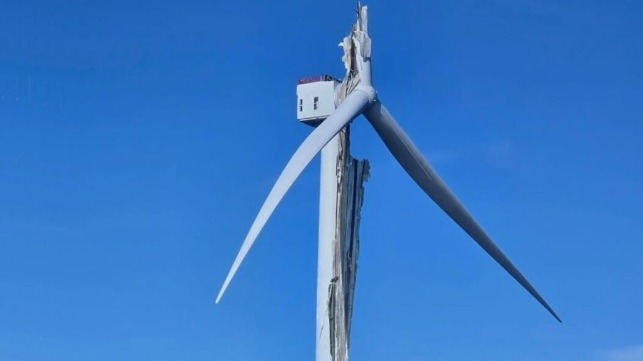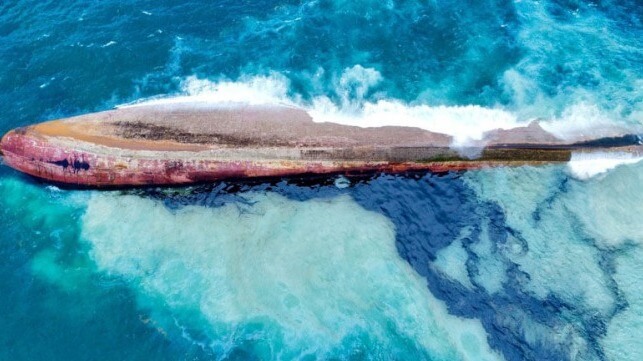Agence France-Presse
October 25, 2024

People walk through logs swept away by Tropical Storm Trami in Laurel, Batangas province, south of Manila (AFP)
Residents of the northern Philippines used spades and rakes to clear their homes of mud and debris on Friday while others still awaited rescue as the death toll from Tropical Storm Trami rose to 66.
Tens of thousands remained displaced after fleeing floods driven by a torrential downpour that dumped two months' worth of rainfall over just two days in some areas.
"Many are still trapped on the roofs of their homes and asking for help," Andre Dizon, police director for the hard-hit Bicol region, told AFP. "We are hoping that the floods will subside today since the rain has stopped."
But accessibility remained a major issue for rescuers Friday, particularly in Bicol, President Ferdinand Marcos said at a morning press briefing.
"That's the problem we're having with Bicol, so difficult to penetrate," he said, adding that ground saturated by rain had led to "landslides in areas that didn't have landslides before."
- 'Everything is gone' -
In Laurel, a scenic town nestled near volcanic Lake Taal south of the capital Manila, AFP reporters saw roads blocked by felled trees, vehicles half-submerged in mud and homes severely damaged by flash flooding.
"We saw washing machines, cars, home equipment, roofs being swept away," resident Mimie Dionela, 56, told AFP.
"We're lucky (the rain) happened in the morning, for sure many would've died if it happened at night," she said. "It was indescribable how scared we were."
Islao Malabanan, 63, agreed he was alive only because the flood occurred during daytime, but said his family had lost everything "including our clothes".
Jona Maulion, who started an auto repair business in Laurel less than a year ago, questioned if her family could ever afford to restart from scratch.
"We thought we were on the way to success in the business," the 47-year-old said. "I didn't know that this would happen, everything is gone."
- Death toll grows -
As Trami departed the Philippines in the early hours, traveling west over the South China Sea, the storm's death toll was swelling as fresh reports of victims emerged.
In Batangas province south of Manila, the number of confirmed dead had more than doubled to 34, police told a local radio outlet Friday afternoon.
Earlier in the day, police staff sergeant Nelson Cabuso told AFP six unidentified bodies had been found in the province's Sampaloc village.
"The area was hit by a flash flood yesterday. Our people are still in the area to check if there are other casualties," he said.
Another five people were killed in a flash flood in the coastal village of Subic Ilaya, police corporal Alvin de Leon said.
Police in the Bicol region on Friday reported a total 28 deaths there, while two other bodies were previously found in Quezon province, one in Zambales and one in Masbate.
At his morning press briefing, President Marcos noted that the cities of Naga and Legazpi had reported "many casualties, but we haven't been able to get in yet".
- 'Two months' worth of rain -
Government offices and schools across the main island of Luzon remained shuttered Friday and storm surge warnings were still in place along the west coast, with potential waves as high as two metres.
State weather agency specialist Jofren Habaluyas told AFP that Batangas province had seen "two months' worth of rain", or 391.3 millimeters, fall over October 24 and 25.
An official tally late Thursday reported 193,000 people evacuated in the face of flooding that turned streets into rivers and half-buried some towns in sludge-like volcanic sediment set loose by the storm.
Rescuers in the region's Naga city and Nabua municipality used boats to reach residents stranded on rooftops, many of whom sought assistance via Facebook posts.
The search for a missing fisherman whose boat sunk in the waters off Bulacan province west of Manila, meanwhile, remained suspended Friday due to strong currents, the local disaster office said.
About 20 big storms and typhoons hit the Philippines or its surrounding waters each year, damaging homes and infrastructure and killing dozens of people.
But a recent study showed that storms in the Asia-Pacific region are increasingly forming closer to coastlines, intensifying more rapidly and lasting longer over land due to climate change.
© Agence France-Presse
Severe Storm Damages Ships an Strands Passengers/Cargo Philippines
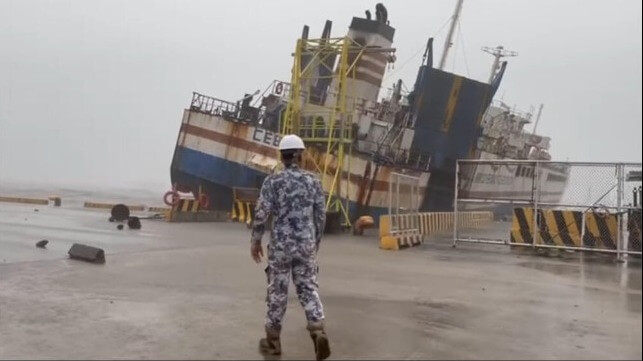
The Philippine Coast Guard is responding to multiple incidents as a severe storm moved through some of the most populated areas of the country on Thursday. Several vessels were reported to be in distress while the Coast Guard was also assisting with evacuations on land and rescues as parts of Luzon flooded.
The storm being called Kristine in the Philippines came ashore on the northeast coast of Luzon, the country's most populated island, and was moving across into the South China Sea. While it was below typhoon status, it had reported sustained winds of approximately 60 mph and gusts over 70 mph. It dumped a month’s worth of rain and was likely to become a typhoon as it moved back out to sea.
Early reports said more than 20 people have been killed with 150,000 or more forced to evacuate. The Coast Guard reports the storm is impacting 136 ports standing as many as 10,000 people and more than 2,800 cargoes. Approximately 150 vessels were reported stranded while an additional 315 were taking shelter from the storm.
In the early morning hours, the Coast Guard received a report that a ferry, Super Shuttle RoRo 2, was being dragged by the severe weather conditions at Batangas Port. The vessel has been laid up for the past year but had three crewmembers aboard. They were reporting it was a “dead ship,” drifting uncontrollably after losing its anchors in the storm.
The Coast Guard working with the vessel’s owners dispatched a tug. Towing operations however were aborted due to the worsening sea and weather conditions. The vessel became wedged up against one of the berths and they had been able to secure it until the storm passed.
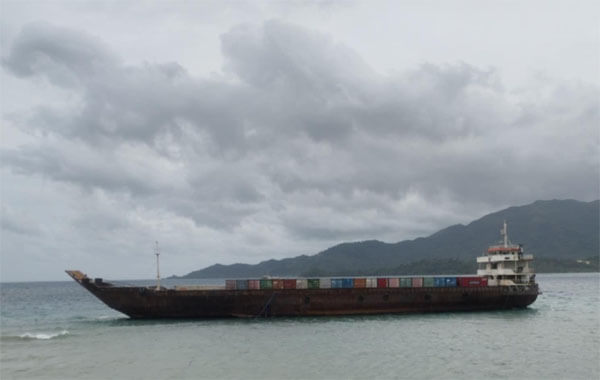
Loaded container carrier was driven aground during the storm (PCG)
At around the same time, a container transport, LCT ASC Big Boy, loaded with 154 containers as well as seven rolling cargoes and a pre-loaded truck reported its anchor chains had broken in the storm. The vessel had 17 crewmembers aboard.
The storm winds and waves drove the vessel ashore about 160 feet from Barangay Sugod. The Coast Guard inspected the ship and reported its engine remained operational but efforts to remove it from the sand were hampered by the weather conditions.
Later in the day, the vessel reported that its port fuel tank had been punctured and they were attempting to transfer 4,000 liters of fuel to another tank. There however was some oil spilled. The worsening weather conditions were blamed for the vessel’s center rudder malfunctioning.
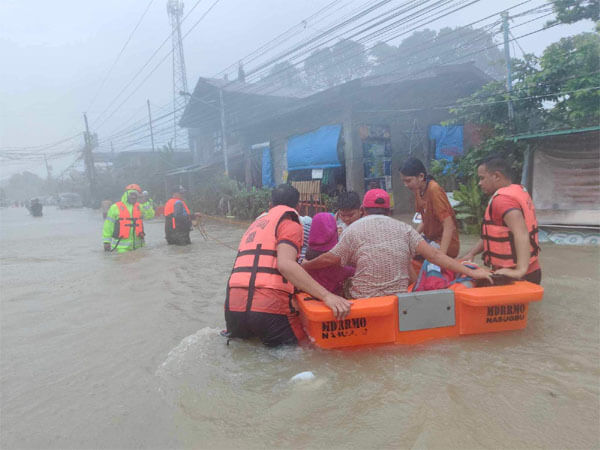
Coast Guard is assisting with the evacuation and rescues (PCG)
To the south near Cebu, another cargo vessel also grounded late on Wednesday. Strong winds and rough seas were being blamed for breaking the anchor chains of LCT Golden Bella that drifted ashore in the storm.
The Coast Guard remains on alert but as the storm has moved away reported the number of people stranded had gone down. However, the rescue operations were continuing as widespread flooding and mudslides were being reported in parts of the Philippines.
